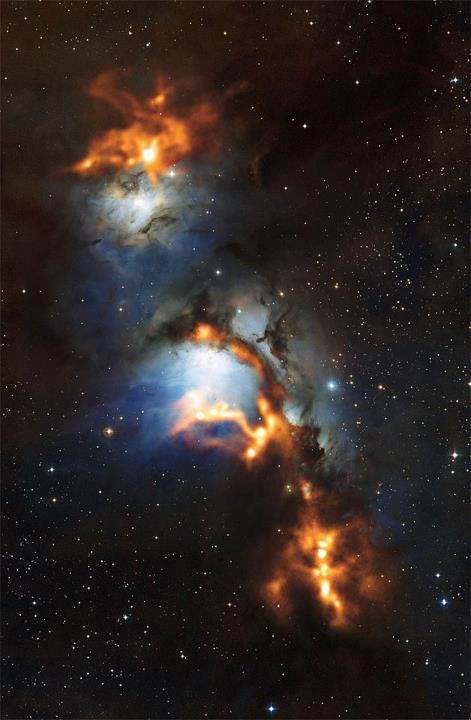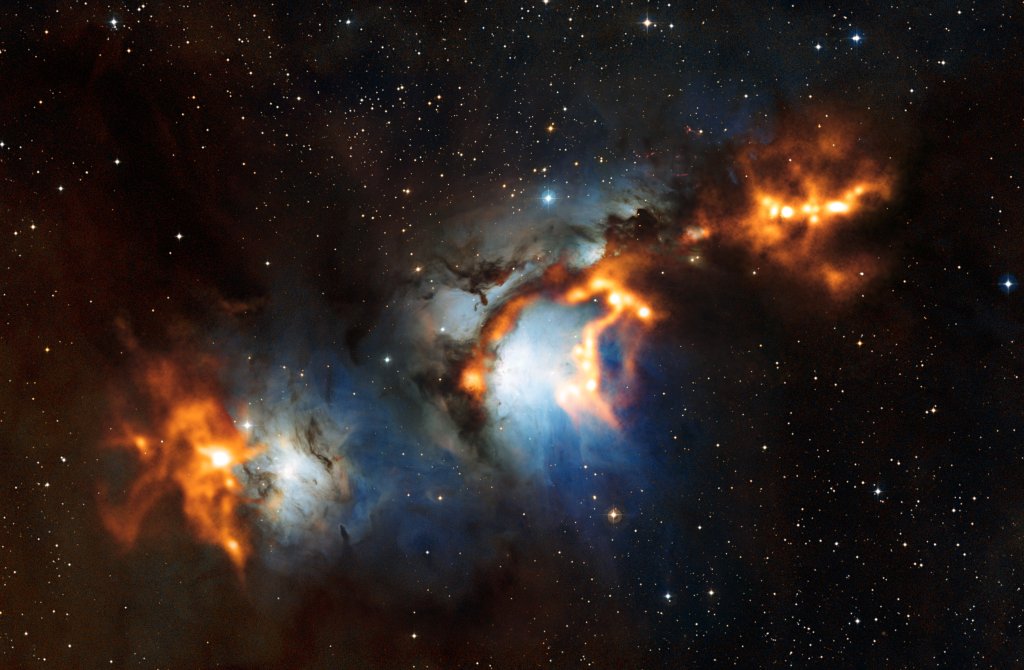

Sometimes, instead of planetary nebulae like the Helix and Butterfly Nebulae, we get something (arguably) far more stunning: reflection nebulae. A gorgeous object like this is generally the result of an enormous clouds of leftover gas not receiving a sufficient amount of energy to ionize the gas to form an emission nebula.
Instead, Reflection nebulae are powered by light ricocheting off neighboring stars, lighting up the sky like beautiful blue Christmas tree lights that are visible through a light snow in the dead of winter. For this particular nebula, spring is on its way after a million years of winter, for the baby protostars found within are about to emerge from their natal shells for the first time. As some of the gas and dust lifts, more of this delicate star cradle will be seen better than ever before.
In the bottom right corner of this image (captured by the Wide Field Imager at the La Silla Observatory in Chile), the pinkish/orange structures are created by jets of material being blown from baby stars that are still buried by thick clouds of dust. The two brightest stars, dubbed HD 38563A and HD 38563B, are the main source of all of the light drifting through the clouds of dust, while hundreds of young, low-mass T Tauris stars lurk within the shadows, still too cool to convert hydrogen into helium. The two stars deeply embedded in the reflection nebula have been described as “bloodless eyes peering back at you through a frosty window.”
Messier 78 (officially dubbed “NGC 2068”) is located about 1,350 light-years from Earth in the constellation of Orion the Hunter. It’s one of the very few reflection nebulae that can be observed with a small, but decent telescope. Just look for Orion in the night sky, and Messier 78 can be found in a bit northeast of the eastern-most star of Orion’s belt, where it forms a right angle with Zeta Orionis.
See a larger image here.